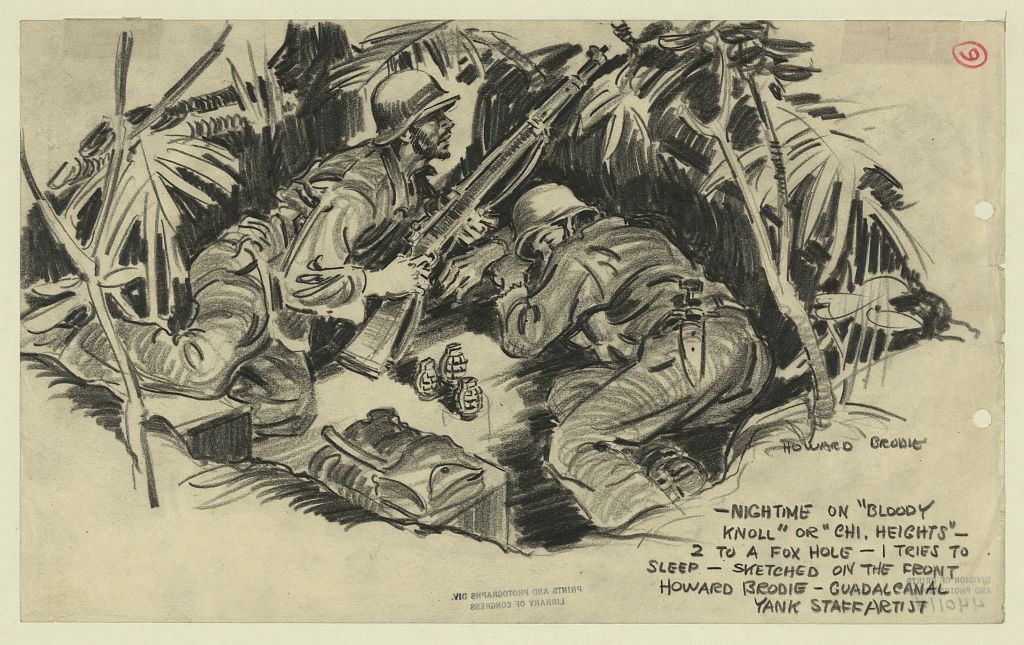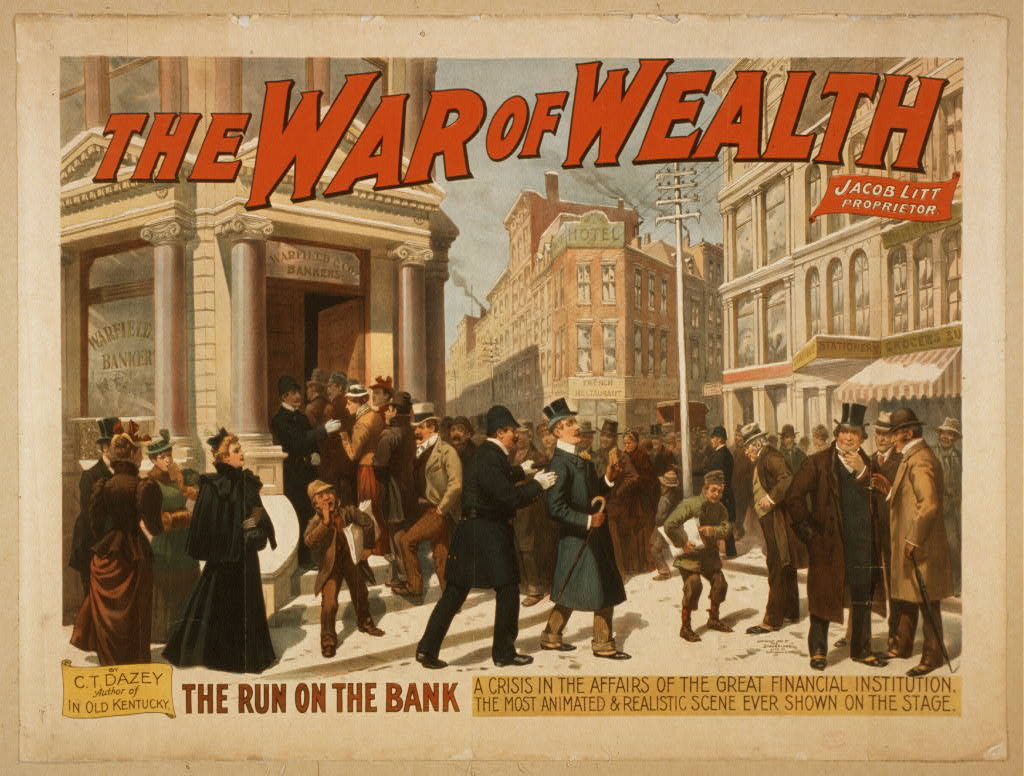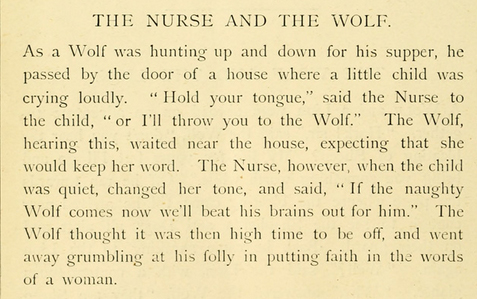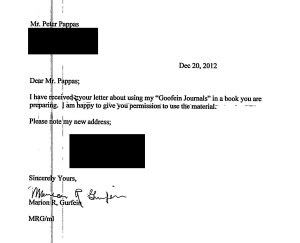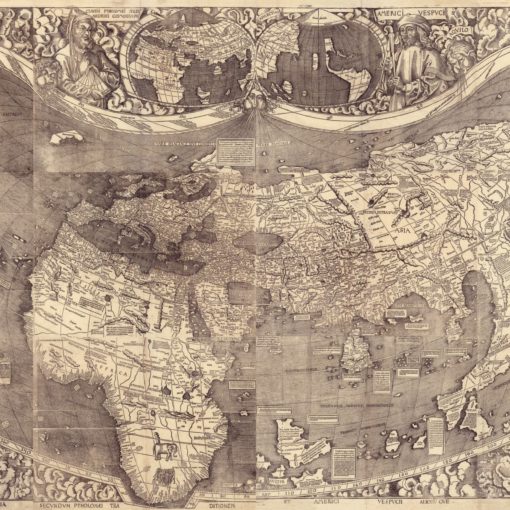Howard Brodie, combat artist, medic, and later, famed courtroom artist, had an uncanny ability to capture the raw emotions of the subjects of his sketches. His WWII drawings, for example, depict soldiers doing everything from trying to sleep in a foxhole to marching into enemy lines, and were done firsthand. Brodie was known for putting himself in compromising situations in order to capture authentic situations.
Here are four exemplary resources from his collection at the Library of Congress:
- The stench of dead…
- Nightime on “Bloody Knoll”…
- Bringing wounded down…
- [Litter bearers on a jungle trail…
Brodie’s sketches remind us how humans experience war. They are simply drawn in black and white with a graphite pencil; likely done in the moment or with little time in between the experience and a chance to reflect.
After giving students a chance to perform an Observe, Reflect, Question analysis activity, either in small groups or individually, prime students’ thinking by asking them to imagine the sketches were going up in a gallery. In writing, have them answer two questions: How might the sketches be arranged? and, What would the captions for each of the sketches be? This should only take 10-15 minutes.
Next, ask them to choose from a number of writing prompts. Encourage students to take risks! Here are some good writing starters:
- Build a narrative about island hopping from these sketches.
- Choose any one perspective from one of the sketches. Create a story about that perspective’s typical day.
- Imagine yourself as the artist. Write a first person account of being in these combat situations.
- Write a poetic ballad about a soldier in one of the sketches.
- Using only dialogue, write a narrative of one of the sketches.
There are many different ways students could approach creating narratives around these sketches, but the objective should be to better understand the humanistic element of war. In other words, the narrative should attempt to answer questions about the soldiers rather than the war as a whole.

